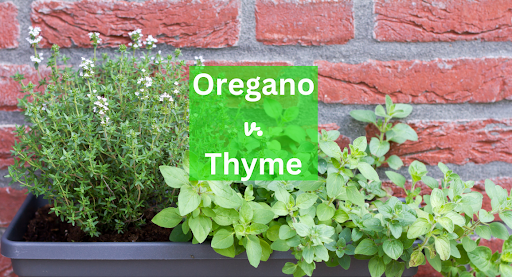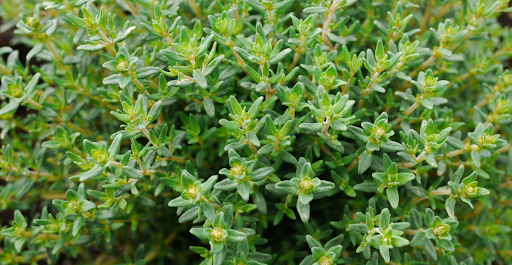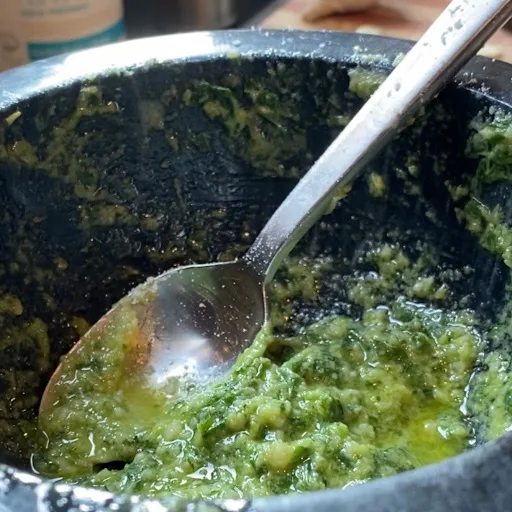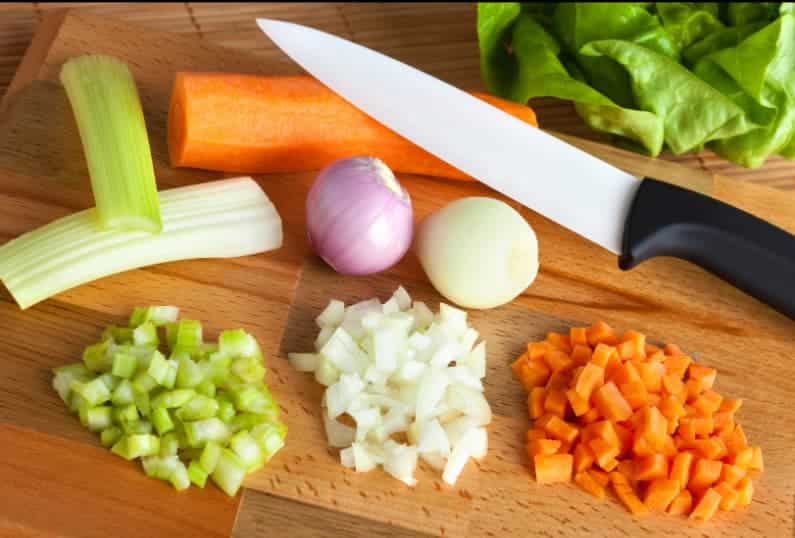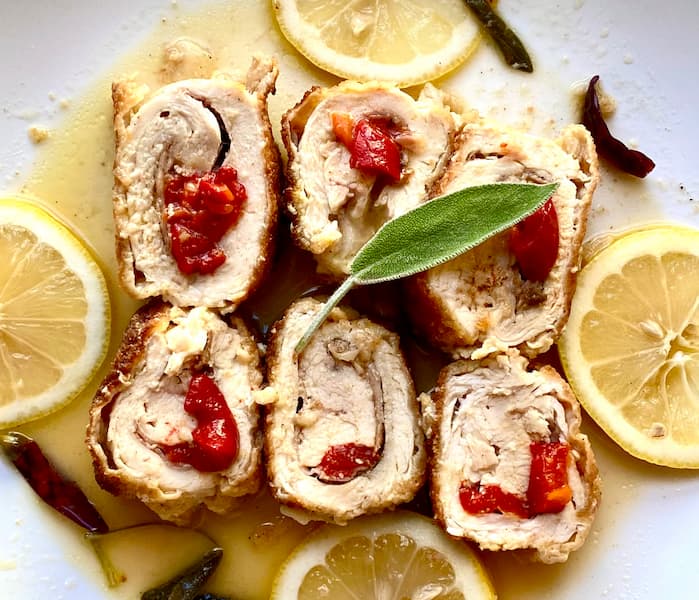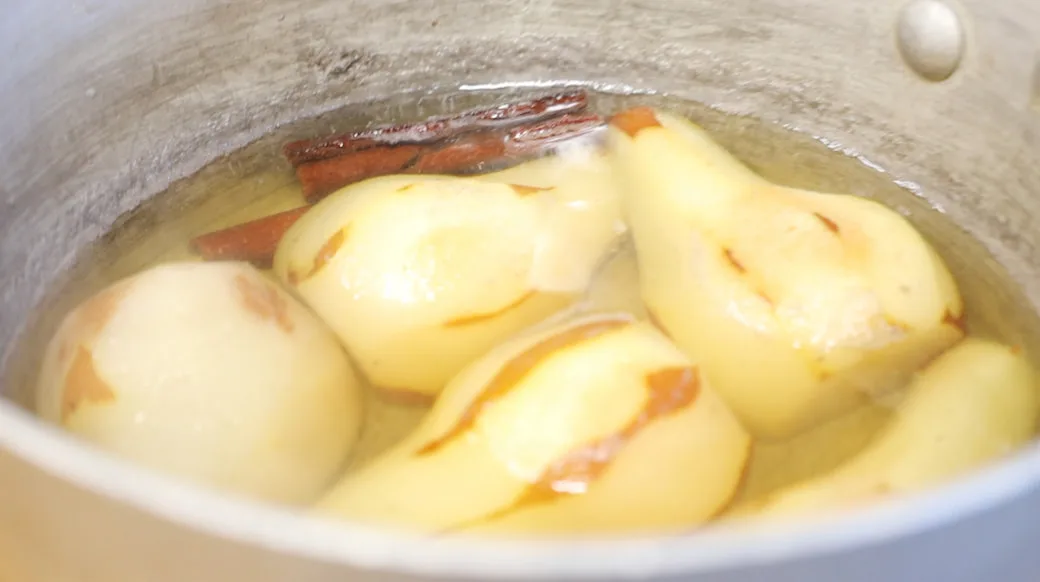Oregano vs Thyme. Have you ever wondered what’s the difference between the two?
About an hour and a half drive from Palermo, there’s a farm where you’ll find a lot of the common herbs that you use everyday. It’s located about 1000 feet above sea level in the arid hills near Parco Avventura Madonie, Sicily.
Knowing where your food comes from is important to someone who loves to cook. Maybe I’m a nerd, but I think it’s fun to research even the most common ingredients to see how they ended up in my kitchen.
One of my recent discoveries is finding out that a lot of the popular herbs that I use when I cook come from Southern Italy. That’s not surprising considering the ingredients in Mediterranean recipes call for ingredients grown in Mediterranean regions.
In this article I am going to discuss oregano vs thyme, a couple of the most popular herbs for the Italian and Mediterranean dishes that I make on a regular basis.
Don’t let the title of the article fool you. This article is not a competition of oregano vs thyme, but more a comparison.
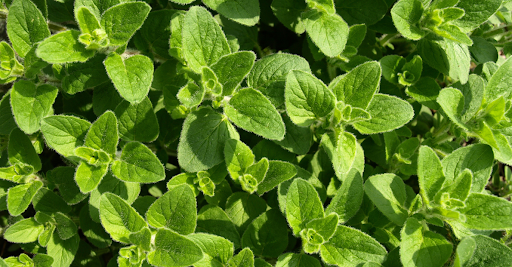
About Oregano
When I make most meat dishes and fish dishes I use a lot of herbs. Oregano is a very common ingredient in most of them.
Oregano has flavor profiles that are described as a little sweet, bitter and peppery.
The Latin name for oregano is origanum vulgare. It is also called wild marjoram.
Oregano is a perennial herb and it is also a member of the mint family.
Oregano leaves are usually green and round or oval. The oregano flowers are colorful and showy and normally bloom between July and October.
Oregano has an earthy and pungent flavor. When comparing fresh oregano to the dried version, fresh has a more concentrated flavor while dried oregano is more subtle.
Oregano comes from the Mediterranean region of the world which is why it thrives in Sicily and other parts of Southern Europe.
One of the best substitutes for oregano is marjoram.
Not only is oregano useful when adding flavor to food, but oregano also has many health benefits.
Important Note: In Mexican cuisine you might see an ingredient called “Mexican oregano”. That is not what we are talking about today. This is actually a different species of plant and is in the verbena family. While it may have some similar flavor as Mediterranean oregano, it is quite different with more notes of citrus and anise.
How to Grow Oregano
Oregano grows best in well drained soil. Sandy soil is actually good for growing oregano. The richer the soil the less pungent the oregano will taste. What I’m saying is that oregano actually does better in poor soil conditions. This is part of the reason it grows well in the dry and sandy soil of the Sicilian hills.
Oregano plants should be spaced approximately 8-10 inches apart.
Planting oregano in the early Spring is best. The plants will bloom in the Summer.
Oregano plants do well when they receive about 6 hours of sunlight per day.
If you have ever seen dried oregano, you will notice that it’s a woody plant.
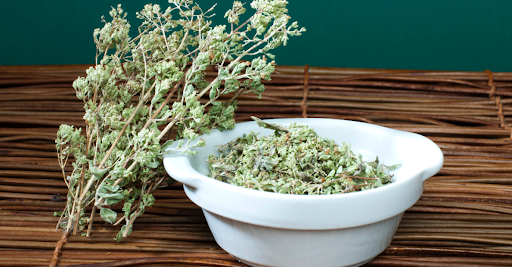
How to Dry Oregano
I love using fresh herbs in these savory dishes when I have them available, but dried herbs have an important role in my kitchen as well.
By drying oregano you can extend the shelf life of this woody plant and prevent waste.
In its fresh form the stems of the oregano plant are soft and flexible. After you dry it this woody herb will become hard and brittle.
If you are a gardener whose herb gardens are full at the end of the Summer, don’t let it go to waste. The best way to preserve your oregano is to harvest it and dry it.
Pick some fresh oregano and wash it under cold water. Dry it by patting it with a paper towel.
Drying oregano is very easy. You’ll be happy when you have a lot of oregano to cook with all winter long.
Like I said, the drying process for oregano is simple. Just tie it up in bundles and hang it upside down in a dry place until it’s completely dried out. This requires long periods of time and the oregano will be completely dried out in 6-8 weeks.
If you don’t have the space or time to let it air dry, you can do it in the oven. Spread your fresh oregano springs on a sheet pan and put them in a 170 degree oven for about one hour.
When your oregano is dried out you can remove the dried leaves from the woody stem and store them in a plastic bag or airtight container.
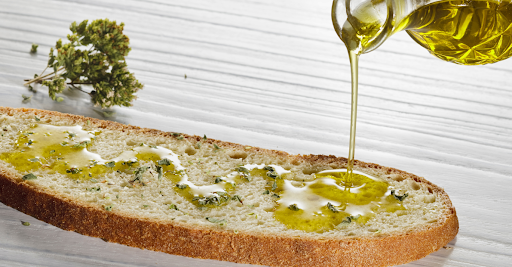
How to Use Oregano
Oregano is an herb with many uses. It’s very common in Italian recipes. It’s one of the main ingredients in most versions of Italian seasoning.
Oregano has a strong flavor so small amounts go a long way. It’s used in many tomato based dishes like pasta sauce and tomato sauce for pizza.
The dried version of oregano is in salad dressings and marinades for meat and fish.
You can also use dried oregano to make flavored olive oil for dipping bread and pizza crust.
About Thyme
Thyme is an herb that has been used in the Mediterranean part of the world for centuries. It is a perennial herb which means the plant will come back every year.
Thyme is a member of the mint family and is known by its scientific name, thymus vulgaris.
The thyme plant has small green leaves that grow on a woody stalk.
There are different varieties of thyme. Some different types of thyme are common thyme, French thyme, English thyme, Lemon thyme, German thyme and Caraway Thyme.
Thyme is an herb that is common in French cuisine, Greek cuisine and other dishes from Southern Europe.
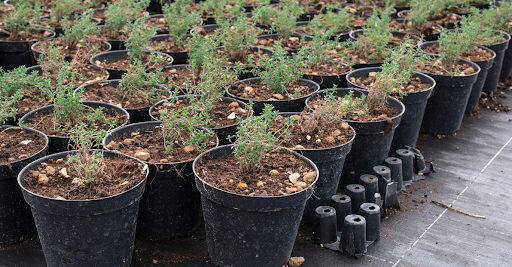
How to Grow Thyme
If you decide to grow thyme at home, you can do it from cuttings, propagation or seed.
It can be grown in pots or directly in the ground.
Thyme seeds are very small. They should be planted in early Spring. Ideally you should plant them in well drained soil. They should get about 5 hours of sunlight per day.
Thyme doesn’t need a lot of water, but you shouldn’t let the soil dry out.
Thyme does surprisingly well in poor soil. It is a good choice for rock gardens and in between paving stones.
Thyme is usually ready to harvest 90 days after planting.
You can pinch a few thyme leaves off of the plant and use it as needed. It’s best to pick thyme early in the morning because that’s when the essential oil of the plant is highest and you’ll get a pungent aroma and strong flavor.
Thyme blooms in the middle of Spring and early Summer. It has small flowers that grow at the top of the plant.
How To Dry Thyme
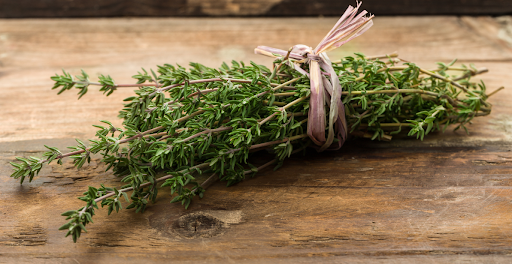
Fresh thyme is great. But, if you have a large harvest, it’s a good idea to make some dried thyme.
The best way to get your thyme into dried form is to cut the top of the thyme branch leaving at least a couple of inches at the bottom of the plant.
Separate the stems and leave them in a dry and dark place. They should be dry in 2-3 weeks.
Another method is to bundle several of the stems with leaves together and hang them in a cool dry place for 2-3 weeks.
Finally, you can dry the thyme in an oven. Set your oven on 170 degrees and place the thyme branch on a baking sheet, making sure they are separated. Leave the thyme in the oven for about an hour until the thyme is dry.
When the leaves are dry, remove them from the stems and store them in plastic zip lock bags or an airtight container.
If you want to chop the leaves before you store them you can do it with a knife or give them a couple pulses in a coffee grinder.
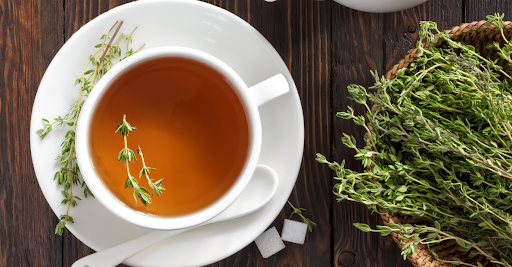
How to Use Thyme
Thyme can be used to flavor food just like oregano. It’s common in salad dressings and marinades for meat and fish.
Thyme is often used to flavor soups and stews in a bouquet garni, which is a small bundle of herbs and spices added to a recipe and discarded before serving. This is common in French cuisine.
Thyme has also been used for its medicinal properties for centuries. It contains something called thymol, which is an antiseptic. It is used as an ingredient in mouthwash.
Thyme tea is also a great way to use this herb for sore throats and soothing remedies.
Final Thoughts
Now that I’ve discussed Oregano vs Thyme, by this time you already know which one to use. There may be difference but both are herbs that will add color and taste to your dishes.
‘Want to know the best herbs for Pork dishes? Find out here:

